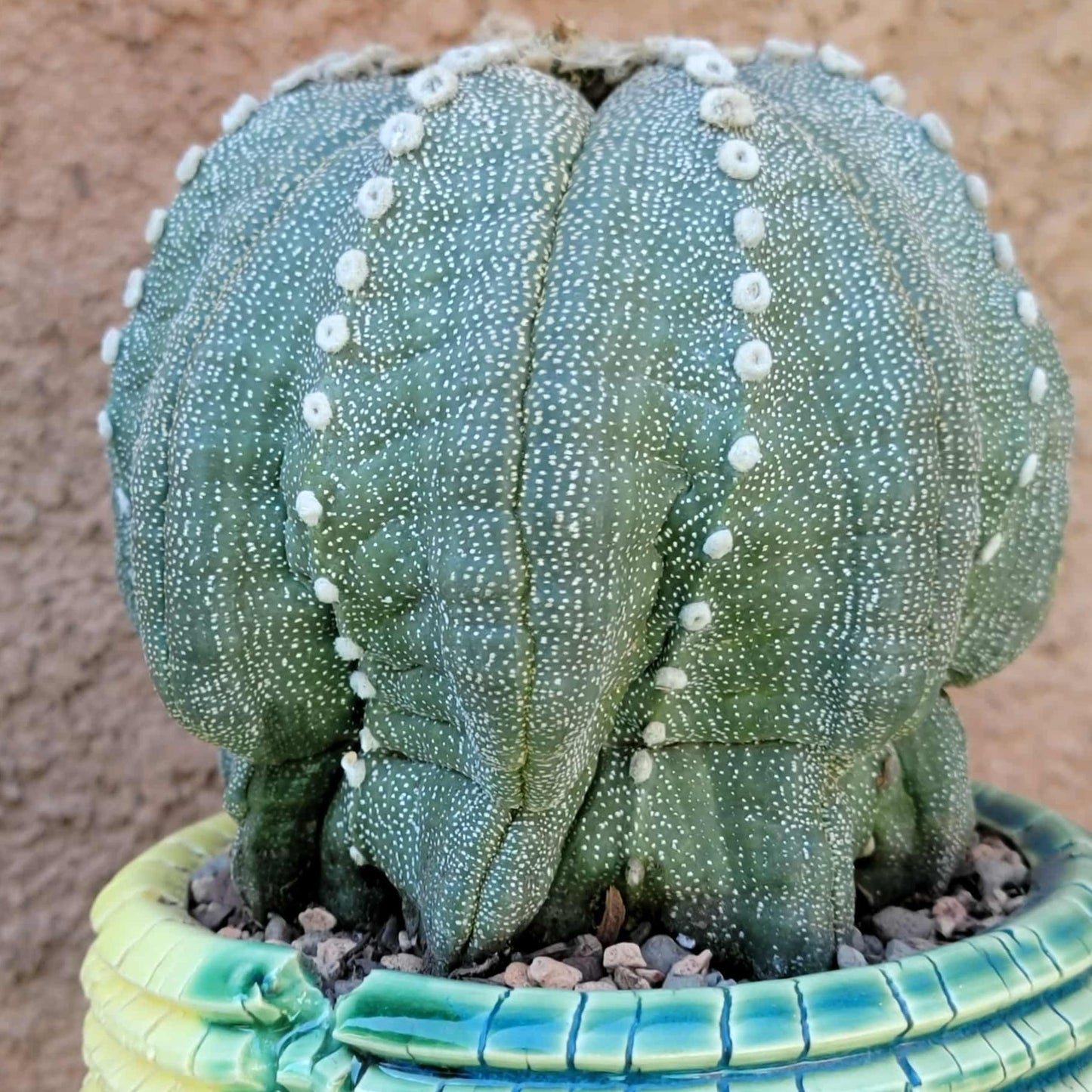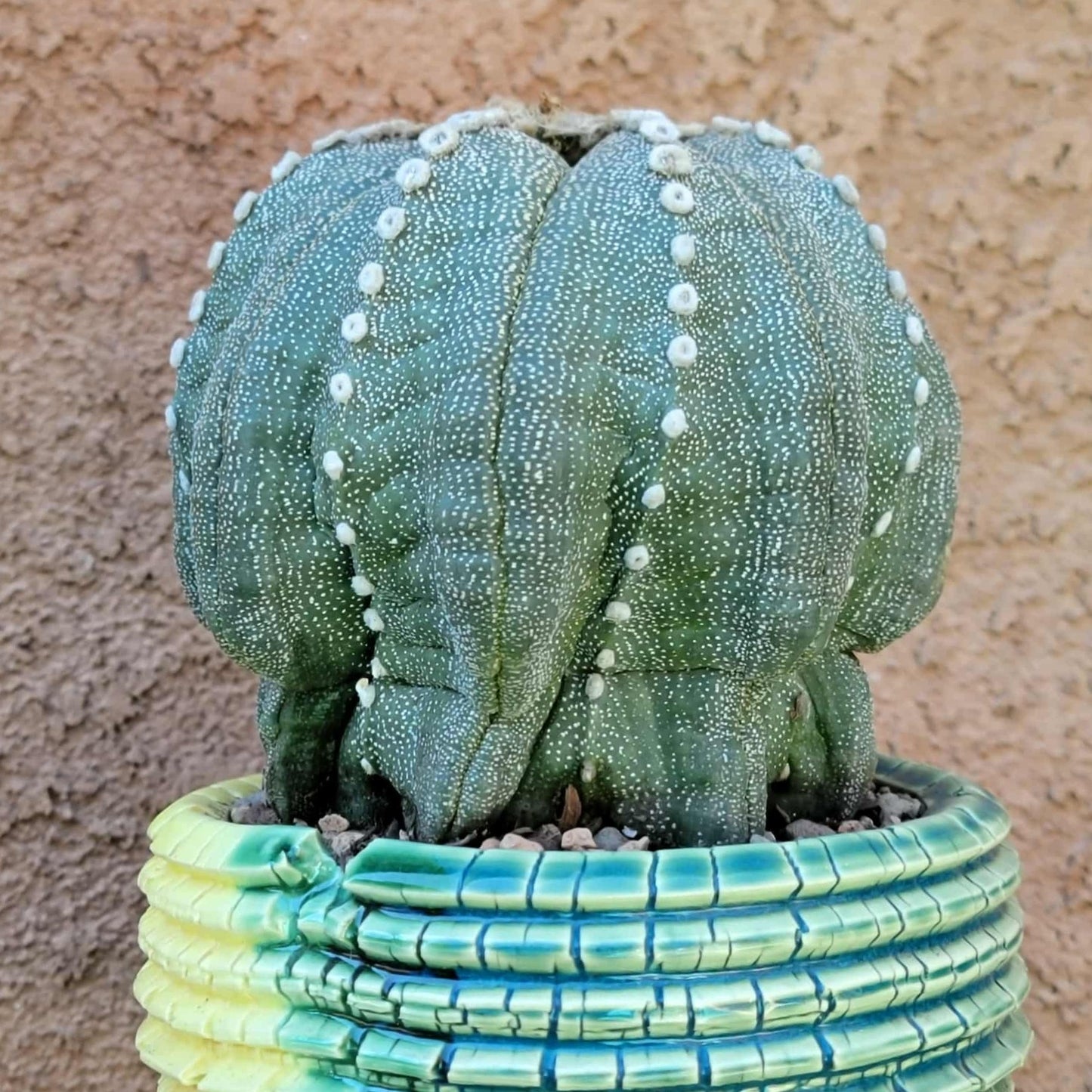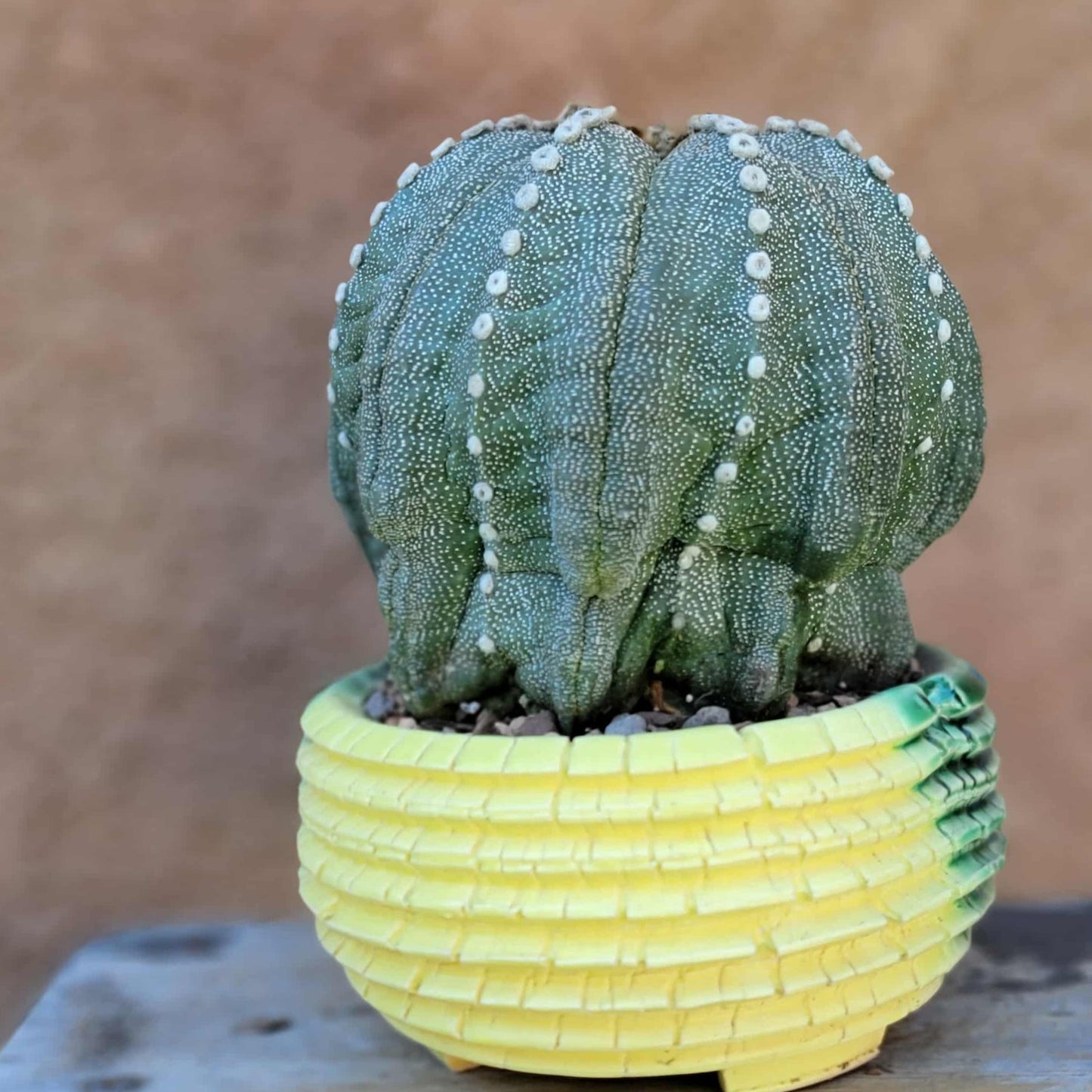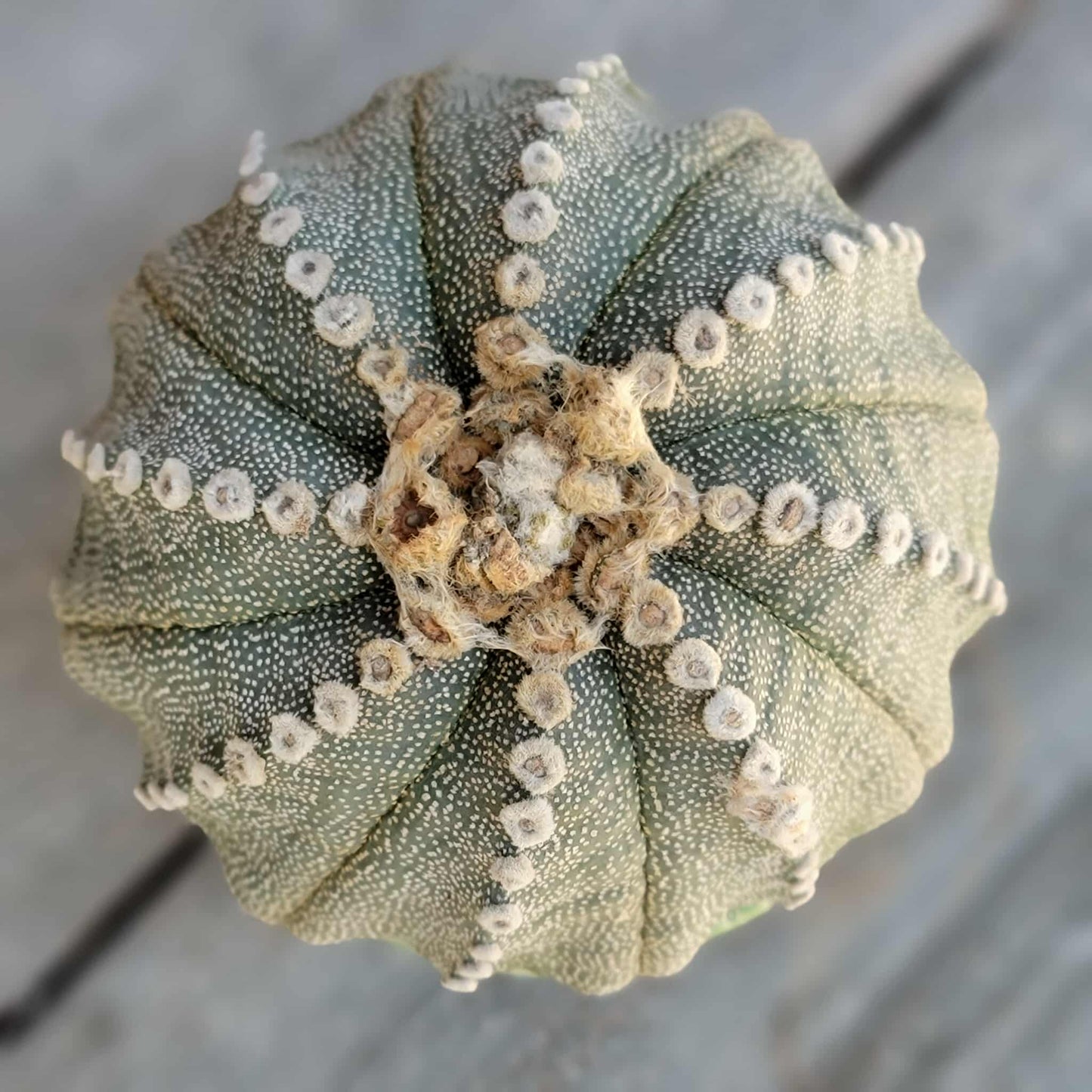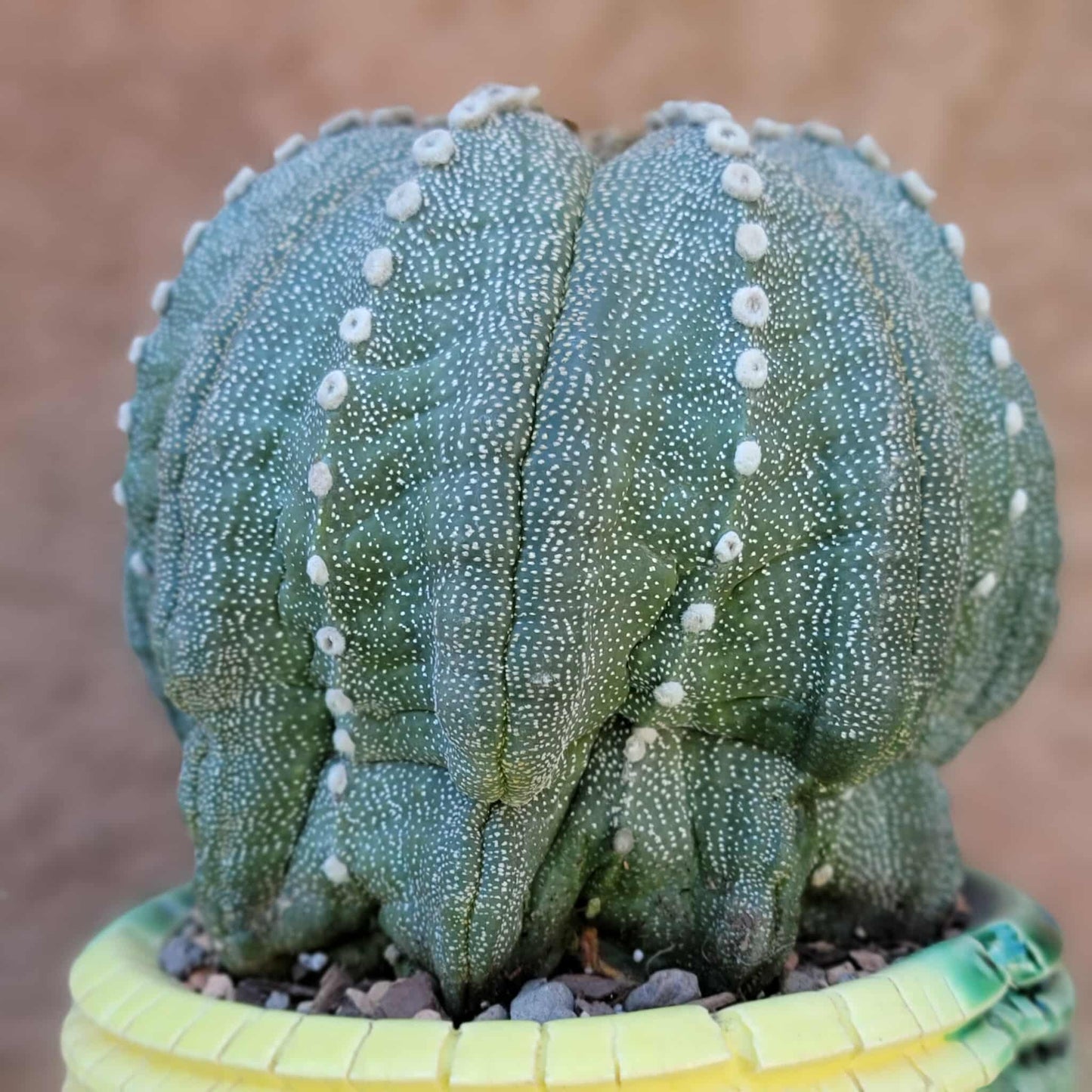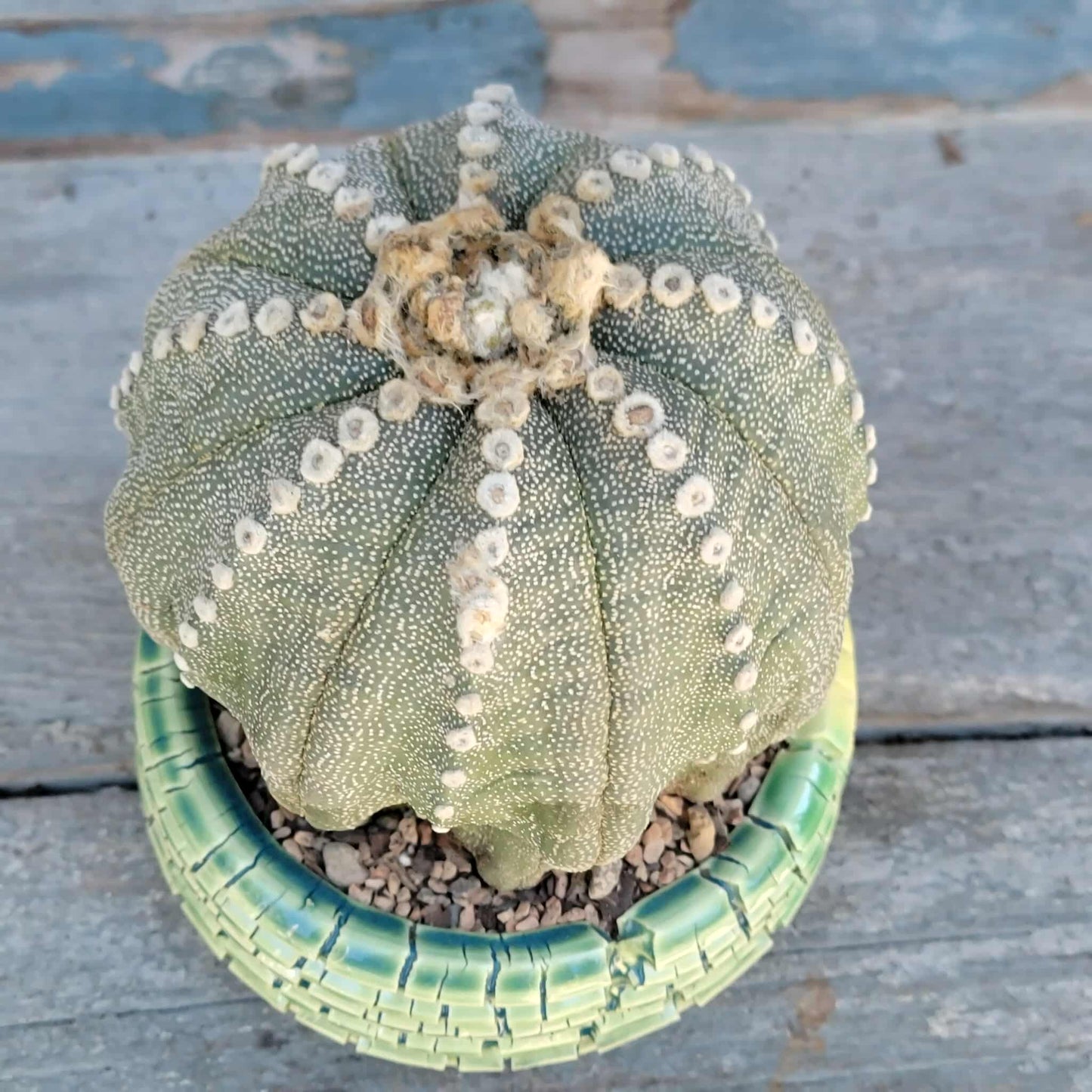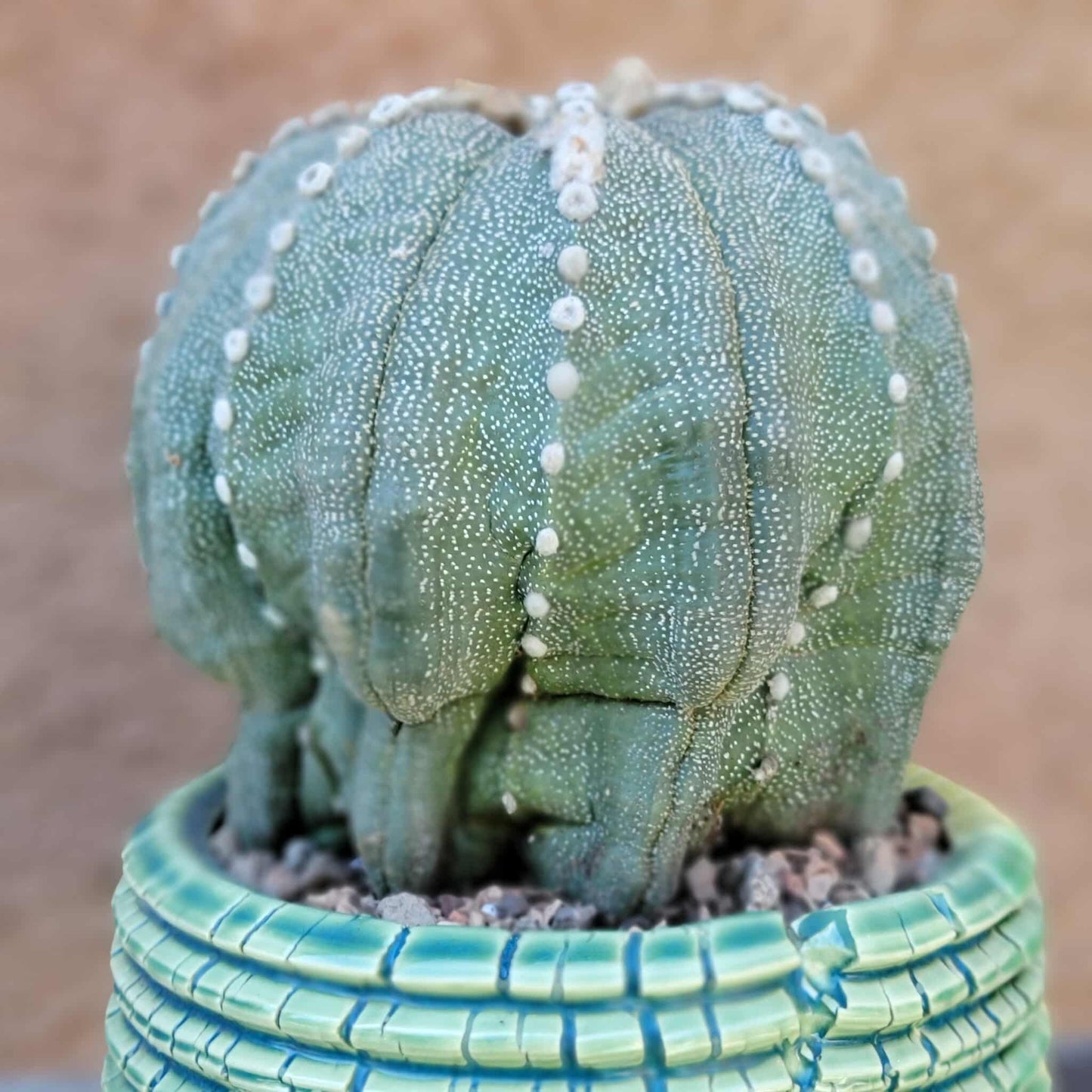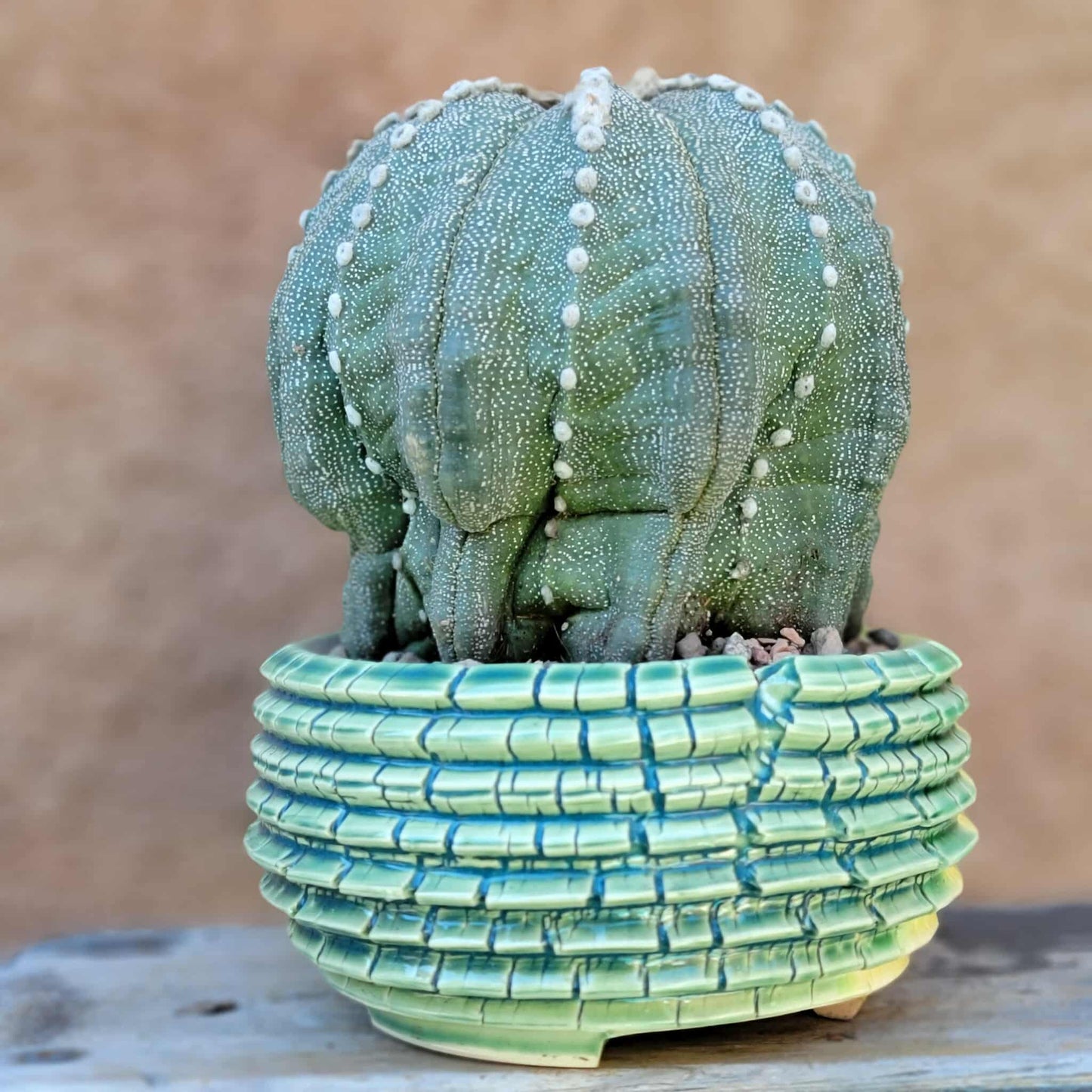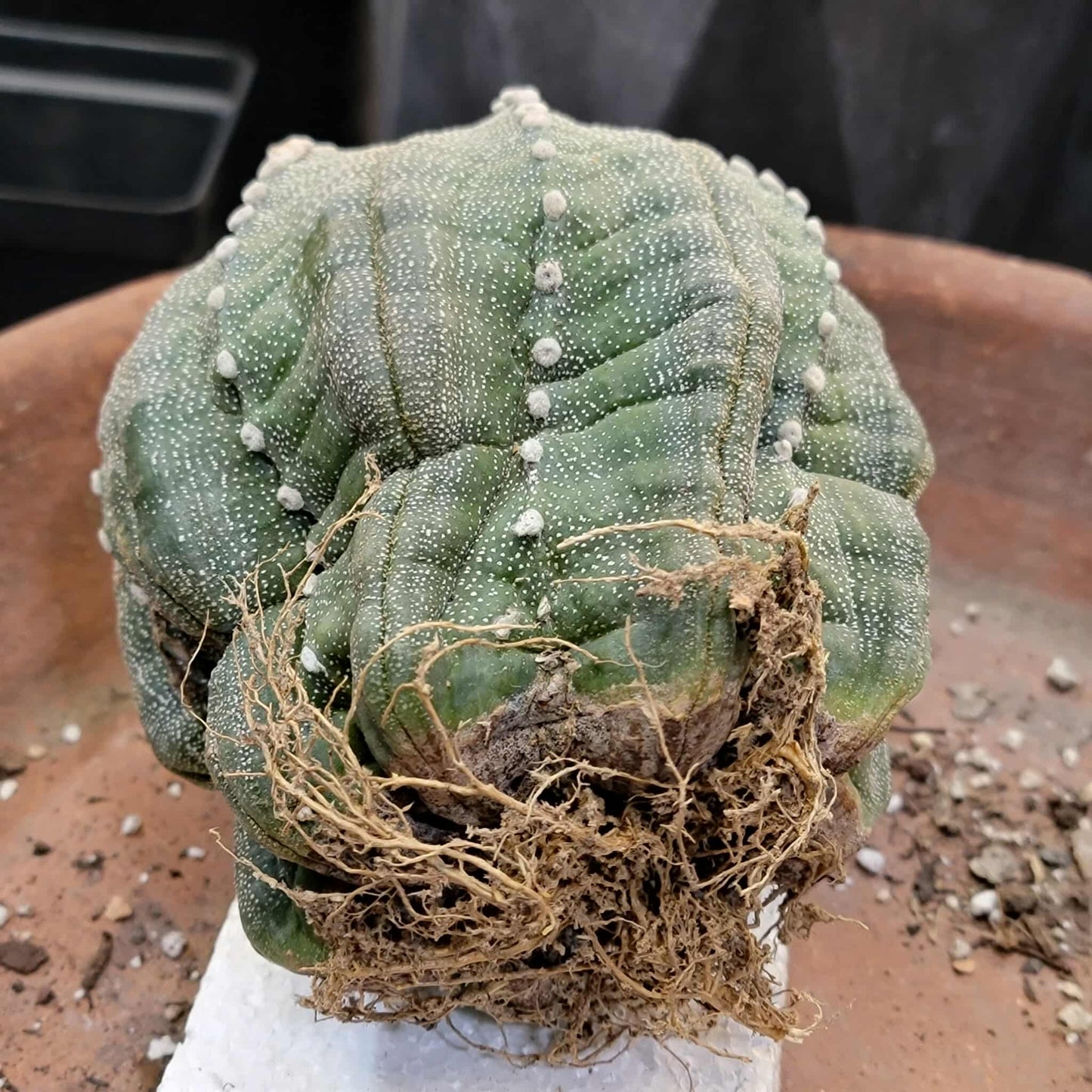Shangri-Ha Cactus Ranch
Astrophytum asterias cv. Line Areoles - BIG!
Astrophytum asterias cv. Line Areoles - BIG!
Couldn't load pickup availability
Astrophytum asterias cv. Line Areoles
Large, old specimen.
Measures 5.5" wide x 4.75" tall.
Showcased here in one-of-a-kind handmade pottery (sold separately).
Roots as shown.
Will be shipped bare root.
Astrophytum asterias cv. 'Line Areoles' is a distinctive cultivar of the Sand Dollar cactus known for its unique areoles, which merge together to form almost continuous lines along the edges of the cactus's ribs. This sought-after feature is especially prized by collectors.
KEY FEATURES
· Areole formation: The key trait of this cultivar is the areoles—the small, fuzzy spots where spines would normally grow—which are tightly packed and merge, creating the "line" effect. They often appear orangish in color.
· Appearance: This is a man-made cultivar, not a naturally occurring variety. It is sometimes produced by crossing A. asterias with the popular cultivar 'Superkabuto,' resulting in a plant known as Astrophytum asterias cv. 'Superkabuto + Rensei' (Line Areoles). The areole lines become more prominent as the cactus matures.
· Growth habit: Like other A. asterias cultivars, it has a flat, disc-shaped, spineless stem. It is a slow-growing cactus, reaching a maximum diameter of 8–10 cm in about 5 years, though grafting can speed up the process.
· Flowers: It produces the typical yellow flowers with a red throat found on other Astrophytum asterias.
CULTIVATION & CARE
· Soil and sun: This cactus requires a loose, well-draining, mineral-based soil and a good amount of light. However, seedlings need to be protected from intense sun.
· Watering: During the summer, it can be watered weekly, as long as the weather is sunny. In drier conditions or with stronger sunlight, water should be less frequent.
· Growth challenges: As the plant ages and reaches maturity, the root system can become weak and susceptible to disease. To prevent this, reduce the frequency of repotting to every 2–3 years once the cactus reaches 10 cm in diameter.
· Propagation: The plant is propagated by seeds. However, since it is a man-made cultivar, the traits may not always be consistently passed down to the offspring.
